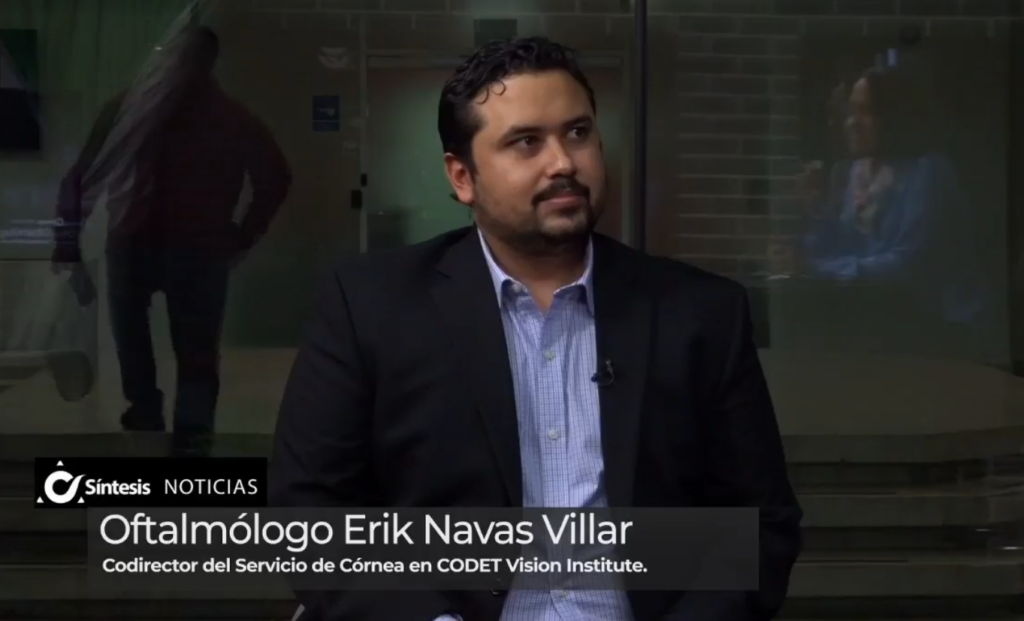Síntesis TV interviews Dr. Erik Navas about Keratoconus
Dr. Erik Navas appeared on Síntesis TV to discuss keratoconus, its causes, treatments, and prevention.
On September 24th, Dr. Erik Navas (Co-Director of the Cornea Service at CODET Vision Institute) was invited to participate in an interview on the popular news program Síntesis TV, where he discussed what Keratoconus is, its causes, treatments, and how it can be prevented.
Keratoconus is the thinning of the cornea. If left untreated, the cornea will eventually bulge outward, forming a cone shape. This distortion causes blurred vision, light sensitivity, and difficulty seeing at all times.

Dr. Navas mentioned that approximately 2% of the population in Mexico suffers from this condition. It primarily affects patients between the ages of 12 and 20, though it can continue to progress until around age 35. The most common cause of keratoconus is frequent eye rubbing, either due to itchiness from allergies or as a habit.
The cornea, being a tissue made of collagen, becomes progressively weaker with constant trauma, eventually protruding outward.
It was mentioned that the treatment will depend on the severity of the condition the patient presents. These treatments are divided into two categories: those that slow the progression of keratoconus and those that improve vision.
One of these treatments is Crosslinking, where the cornea is strengthened by applying a vitamin that is then activated with ultraviolet light. This prevents the cornea from continuing to protrude. Vision-improving treatments include implanting an intraocular lens, such as the Implantable Collamer Lens (ICL).
He also emphasized the vital importance of raising awareness and stopping the habit of rubbing the eyes. Even after a diagnosis of keratoconus and undergoing treatments, if patients continue with this harmful habit, scars can form on the cornea. This can cause the cornea to become opaque, making vision untreatable with any type of lens. At that stage, the only way to address the problem is through a corneal transplant.
The doctor also talked about myopia, noting that it is becoming more common due to the increased use of electronic devices, as they require more near vision.
It’s as if we are training our eyes to focus only on nearby objects. We no longer need to see far away, and our eyes adapt to near vision, even changing shape, which leads to needing glasses to see beyond six meters..
To combat this, the recommendation was made to apply the 20/20 rule, which consists of taking a break from near vision every 20 minutes and looking at a distant object for 20 seconds. This helps relax the eye muscle that allows us to focus.
We thank the Síntesis TV team for the opportunity they provided us on their news program. At CODET Vision Institute, we are committed to offering preventive information to our patients and the public.
If you want to watch the full segment, you can see it here!
Interview about Keratoconus – Dr. Erik Navas – Noticiero Síntesis